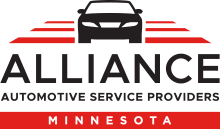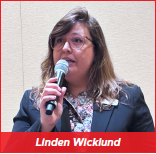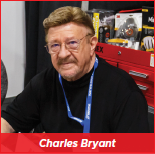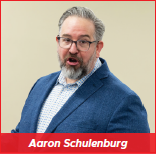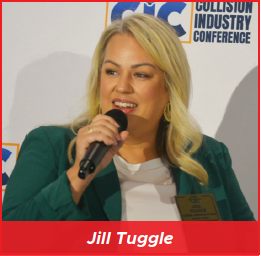Fighting the Good Fight
Industry Leaders Consider Changes and Challenges
Every day, the collision repair industry changes. Shops face a heavy load of challenges that come in many forms – from consolidation and workforce shortages to technological advances and contention with third-party payers. Yet, the need for vehicle repairs remains consistent, demanding shops keep up with the constant evolution of the industry to remain competitive and profitable. Those unwilling to put in the work to strengthen their businesses just might see their doors shuttered before long.
But what are the biggest changes and challenges facing the industry? And how can shops make sure they’re strong enough to carry the burden? AASPMN News sat down with AASPMN Executive Director Linden Wicklund, Alliance of Automotive Service Providers of Massachusetts (AASP/MA) Executive Director Lucky Papageorg, Alliance of Automotive Service Providers of New Jersey (AASP/NJ) Executive Director Charles Bryant, Society of Collision Repair Specialists (SCRS) Executive Director Aaron Schulenburg and Auto Body Association of Texas (ABAT) Executive Director Jill Tuggle who weighed in on some of the biggest challenges they’re seeing in their regions and offered suggestions on how shops can build the business muscle needed to survive the onslaught.
Wicklund offered a very valid reminder that is worth sharing before we dive into the responses given by the industry leaders above: “In answering these questions, it is easy to make generalizations that cast criticism or give the sense that the issues facing the industry are straightforward. They are the right questions, but these are tricky topics. Trying to distill down the enormity of what shops are facing into a few sentences does not capture the reality of what shops are grappling with. I know that is obvious, but I don’t think it is said enough. It needs to be said loudly and repetitively, so shops that are struggling don’t feel alienated by other shops or lose hope because they see the struggle around them. Independent shops have lasted for good reason, and they will continue to do so.”
AASPMN News: Although the collision repair industry continues to be in high demand, it faces a number of challenges which forces constant evolution. What do you see as the biggest changes impacting shops today?
Linden Wicklund: The biggest disrupter for shops – both mechanical and collision – seems to be a few different things coming together to make a perfect storm: baby boomers who own a large percentage of independent shops are retiring, investment companies are buying up businesses and consumer spending habits are changing. Boomers selling at the same time that investment companies are looking to buy is an obvious threat to the share of shops remaining independent. Consumer preferences might seem a bit removed from that, but as shops are given a facelift that looks like professionalism when they are bought out, customers may increasingly see this as an improvement in quality regardless of what actually goes on in the shop.
Lucky Papageorg: The challenges in keeping up with the advances in technology because of the very low ROI when investing in training, equipment and keeping and attracting new talent to the industry.
Charles Bryant: The biggest change is the car itself and how vehicles have evolved. Today’s cars are computerized and contain tons of electronic components which need to be recalibrated after an accident, and shops need the right tools, equipment and training to do that.
Aaron Schulenburg: The obligation to perform safe and proper repairs has never been more critical – especially when it comes to structural components and safety systems designed to protect occupants. There are many external, commercial entities trying to influence what processes, parts and tools shops use, but the repair facility ultimately holds full responsibility for the decisions made during the repair. That accountability hasn’t changed, but the external pressure is increasing significantly.
Those decisions must be rooted in OEM procedures and factory information, yet we’re seeing growing resistance to proper safety inspections, adherence to repair procedures and even third-party service providers entering agreements with insurers that dictate pricing. Often, these agreements include end-user license terms that subtly shift liability back to the shop – it’s essential to read those closely.
At the same time, vehicle technology continues to advance rapidly, adding to repair complexity. Combine that with rising costs for materials, labor and outsourced services, and you have a perfect storm driving up the total cost of repair while putting more pressure on shops to do more with less.
Jill Tuggle: Economic changes are being felt really heavily right now. Many of us saw this coming in some regard because there were warnings, but none of us expected the way it actually showed up. Part of the problem for shops lies in insurers’ insistence on decreasing labor rates by $5 to $8 per hour which presents additional pressures in a time when claims are down and the cost of living has increased.
AASP: Many independent shops may view consolidation as a huge problem they’re forced to contend with. Why does consolidation create challenges, and how can independent operators overcome those concerns?
LW: In addition to customer perceptions, the speed of buyouts is increasing the pressure as some shops are feeling the need to ‘get out while they can.’ The other big factor is buying power; those with national contracts can get better pricing than individual shops can. Independents need to differentiate themselves and have a clear understanding of how they can serve their customers better than the competition. The challenge is knowing what this looks like from the customer’s perspective. Badmouthing the quality of repairs coming from consolidators is not an effective strategy.
It is worth noting that consolidation is a big topic on the collision side, but it is also happening on the mechanical side. The market squeeze from national quick-service operations popping up is a clear indicator of what customers are looking for.
LP: Part of the issue regarding consolidation stems from some shop owners not knowing the true value of their business by either selling themselves short and leaving too much on the table or having truly unrealistic expectations of what they are worth. The other challenge is thinking that they have to jump on the consolidation train as their only way of surviving rather than expending the energy to make themselves unique and appealing to potential customers who do not want the big box store type of service.
CB: The biggest problem is consolidators controlling industry rates by lowballing and working on volume; it’s difficult for independent shops to compete with that. If the consolidators were smart, they would lay down the law and tell insurers ‘this is how much it takes to fix the car, period’ because they hold a large enough market share that they could make a positive impact. Until they do that, I’d urge independent shops to focus on performing quality repairs and refusing to accept the nonsense that insurance companies try to demand. After all, the insurer isn’t liable for the repairs; the shop is. Too many shops buckle to the insurer and make concessions on how they repair a car just to get the work, but the potential ramifications aren’t worth it.
AS: Anytime you have larger entities that are focused primarily on volume and growth, there’s often pressure to make agreements and concessions on how the repair process and claims process intersect. This can create confusion for customers who are told by some shops that certain steps aren’t needed or that others will do the job for less.
The concern around consolidation often comes from the presence of well-funded businesses that prioritize acquiring market share above all else. That can tilt the playing field. Businesses who have invested in their culture, their people, their capabilities, their communities and their commitment to the vehicle owner still have a clear path to stand out. There’s an opportunity to differentiate through commitment to process, transparency and relationships. Customers recognize and value that.
JT: Shops should recognize that consolidators rely on a completely different business model. Instead of trying to compete, they should lean into their identity as an independent shop by pushing consumer education and engaging with their local community – because they are part of that community, and MSOs cannot compete with that. Find new ways to differentiate your shop by focusing on providing a higher customer service experience and possibly seeking out those certifications that you’ve been putting off.
AASP: Rising costs present another obstacle for shops to overcome, especially as they continue to face pecuniary pressures from third-party payers. What are the best ways for shops to clear that hurdle?
LW: Shops need to know their numbers: what their profit margins are on every element of a repair, how many repairs they need to be doing to cover general overhead and when to turn away certain jobs. Third party payers are a major challenge, but mechanical shops are also faced with repairs being turned down. Maybe there is more to learn from one another with that.
LP: BE MORE PROFESSIONAL IN THEIR APPROACH and overcome the fear... put the time in to explain what insurers are doing and why. Just as in the medical field, the vehicle owner may have to pay upfront and seek reimbursement from the insurer to be fully indemnified as per the policy they purchased. Shops have to take a stand and STOP subsidizing an industry which announces from the mountaintops how much profit they are making – profit at the expense of the vehicle owner and the collision repairer.
CB: Educate yourself. Every shop should belong to their local and national associations and take advantage of the training opportunities! Beyond that, they can simply lay the law down. It’s a joke (though it’s not funny) how insurers use the 15 percent of shops that are DRPs to control the other 85 percent, but those shops get concessions to compensate for their restrictions, which non-DRP shops don’t get, such as being able to act as the appraiser. That gives DRP shops the opportunity to adjust their hours to ensure they’re remaining profitable.
AS: The biggest issue with rising costs is when businesses fail to track them closely or adjust quickly. If you’re not actively monitoring your costs – and updating your pricing to reflect them – you’re likely already behind. Everyone involved in the repair planning and billing process needs to understand and communicate real-time costs accurately. For example, if your part-code tables or pricing systems aren’t updated to reflect your charges, inflation will outpace your revenue. More responsive estimating and invoicing tools can help ensure your pricing aligns with actual costs and profit expectations. Ultimately, staying agile and informed is key.
JT: It’s more important than ever to ask good questions, present the right documentation and be willing to challenge insurers when they refuse to pay for certain operations. Shops can also make their voices heard with their local Department of Insurance and by keeping labor rate surveys, like the National AutoBody Research’s (NABR) LaborRate Hero and insurer surveys, updated with their actual door rates. This will help lay the groundwork for future fights on their behalf. In the meantime, it’s worth considering a customer co-pay model.
AASP: Even as the number of shops dwindle due to the aforementioned issues, workforce shortages continue to plague the industry as experienced technicians near retirement and fewer young people are entering the trade. Some estimates suggest as many as 100,000 positions could be unfilled by 2026! Where can shop owners/ managers find qualified talent? Are there ways for them to proactively cultivate an incoming workforce?
LW: This is an interesting question because in the past 18 months, I have had so many shops say this is no longer an issue, yet the numbers clearly suggest a major shift is coming. The conversation has gone from not being able to find anyone to there being enough entry level people, but too few people with advanced skills. Replacing a top-level performer with a top-level performer is not easily done unless the shop is promoting someone internally. Shops need to pay close attention to retention. Sending a B-tech to host a table at a career fair might be just the thing to give them a sense of pride in the work they are doing and pay off even more than picking up some student names. MNCARS has resources shops can use when visiting a tech school. Being on a school advisory board builds direct relationships with faculty, which is a great way to get leads on new graduates. Techs need clear growth pathways at every level of their careers.
LP: Offering apprenticeship opportunities in their shop and getting involved with their local technical schools is a good place to start, but they also need to look outside the box and always be seeking new sources of employees, whether it is at the local fast food venue or at a store selling gaming equipment. Think outside the box!
CB: Not to keep harping on the same topic, but the labor rate is the biggest deterrent to attracting more talent to our industry. When body shops are working for $50-$55 an hour, they cannot pay someone a decent salary. Why would a young man or woman come to work in such a physically and mentally demanding job when they can make the same amount – or more! – working at Amazon? Or they can go to work at a mechanical shop and make nearly double what they could make in a body shop. Until our labor rate realistically addresses the cost of doing business and allows shops to fairly compensate workers, this problem is going to persist; we aren’t going to attract new talent into our industry.
AS: Attracting and retaining talent starts with building the right culture. Shops that only focus on hiring the next ‘A-tech’ on-demand are likely to continue struggling. The most successful businesses I’ve seen invest in developing their own people. They foster mentorship, support interdisciplinary training and create collaborative environments where employees have a voice in shaping both process and culture. Even in tough labor markets, these shops grow and retain experienced staff.
Culture isn’t just about what happens at work – it’s also about how a business supports its people outside of work. Do they offer strong benefits? Are they helping create better financial planning? Do they provide flexible scheduling that respects work-life balance? These things matter. As an association, SCRS has been working to provide tools and resources – such as our 401(k) resource (scrs.com/401k) or healthcare insurance (scrsbenefitscenter.decisely.com) which help our members become better employers in this regard.
JT: It starts with keeping a good culture for the employees that shops already have, which includes creating incentives that encourage employees to help with efforts to grow their own talent. Because consolidators have different resources that often allow them an edge, smaller shops need to lean into their identity by engaging in their local community, getting to know people and seeking out opportunities to attract more young people to the industry – whether that be by partnering with local schools or simply developing relationships with neighbors and friends which might give them an opportunity to learn that someone they know is seeking a new position.
Shops can also embrace some of the more technologically advanced methods for finding talent, such as bodyshopjobs.com, which was created specifically to help independent shops find employees.
AASP: They say that ‘only the strong survive’ – do you think that’s true when it comes to collision shops in the current environment? With so many changes coming at lightning speed, how can shops strengthen their positions to ensure they are among those that survive the evolution of the industry?
LW: Nimble can beat brute strength. In Japan, fabric buildings are often used instead of metal buildings in areas susceptible to storms, particularly tsunamis. The buildings’ fabric shell washes away, but the foundation and frame are unharmed and ready to quickly be recovered with a new fabric shell. I don’t know what the version of this is for shops, but I’m very certain there are independent shops who know how to think like this. They know what is not important and can be sacrificed versus what is critical for thriving even after the worst the world can throw at them.
LP: Strength has to come from within, but know that you cannot do it alone. There are resources out there, and the ‘strong’ have set great examples of how to survive and get better, so you do not have to reinvent the wheel...find out how others have succeeded and do what they did!
CB: The strong survive, but strength doesn’t have to be individual. Join together. Create a strong network. Our industry needs more unity; we need to create a community among the shops that are willing to fight for our industry. We need to come together as a team that will stand together to do what’s right not just for our businesses but also for the customers who are counting on us to make sure their vehicles are safe to drive when they leave our shops. We are always going to be stronger collectively than any one of us can be alone.
AS: If it’s true that ‘only the strong survive,’ it’s worth considering how strength is formed. True strength isn’t something we simply have; it’s something we build, often slowly, from the repeated act of showing up and pushing through resistance. But I think it’s fair to say that the process is accelerated — and made more sustainable — when you are surrounded by others. A strong and supportive community can help challenge your blind spots, celebrate your growth and share resources, perspectives and wisdom you couldn’t access on your own. I like to think the associations in our industry offer these types of communities and opportunities for growth, accountability and vision.
I’d encourage shops to do more than just seek survival in your business; seek belonging, and be a part of something bigger than the four walls of your business!
JT:
The strong certainly survive, but consider how you define strength. Does ‘strong’ encompass having a good business acumen, a marketing mind or something more? I believe being well-rounded is the most important component to strengthening your shop, and that begins with educating yourself to understand all the opportunities that exist within this industry and embracing what makes the most sense for your individual business.
